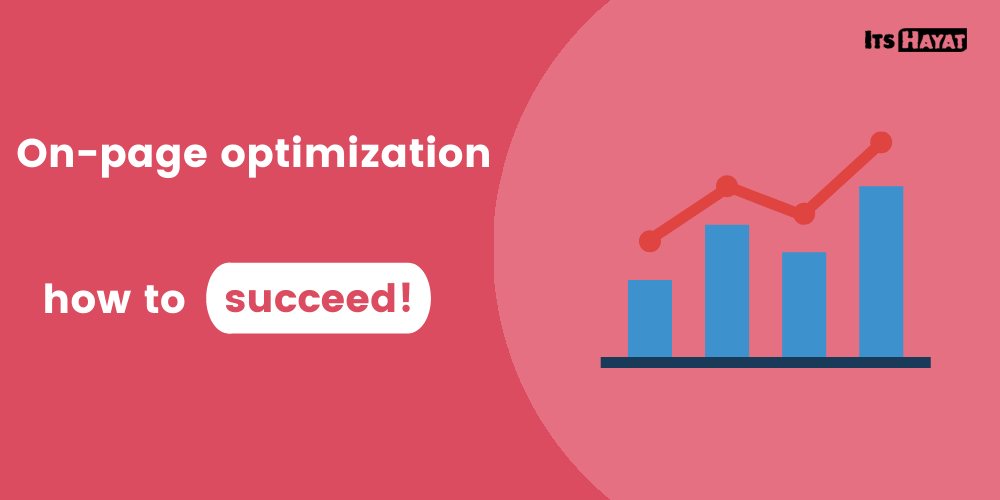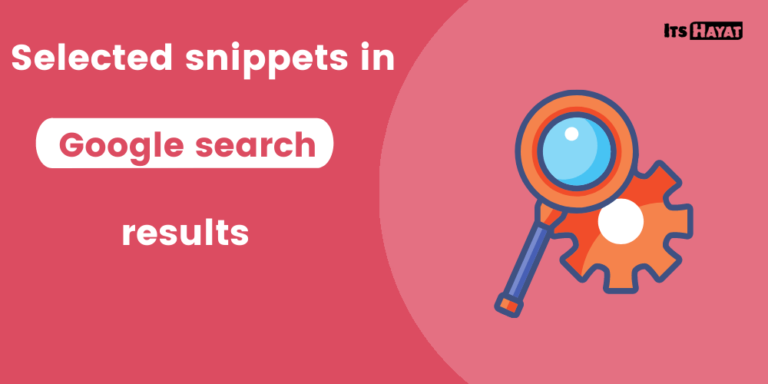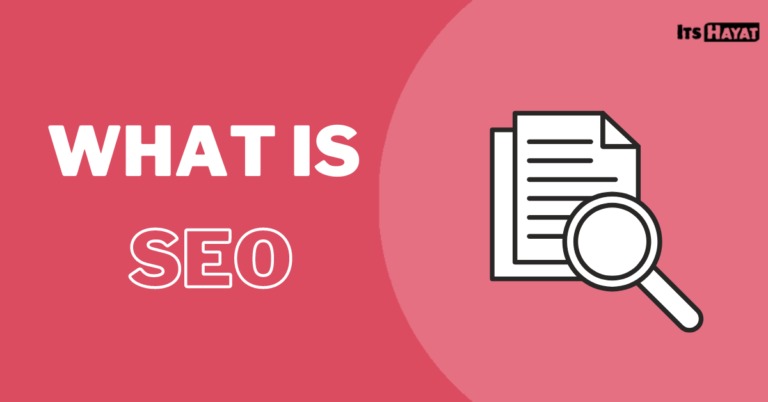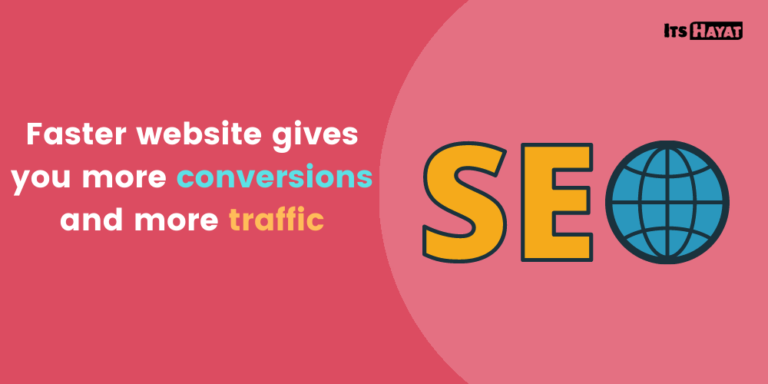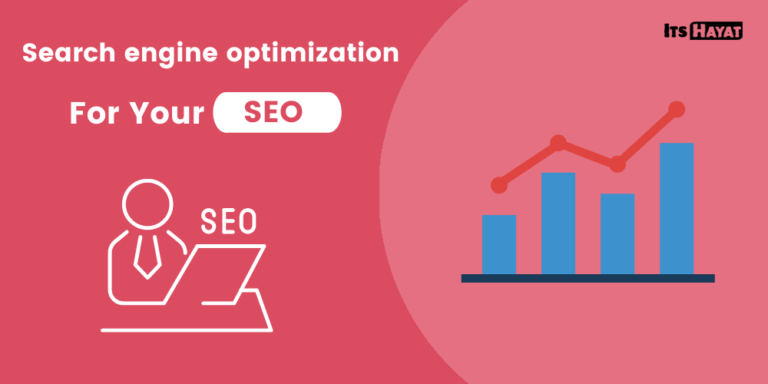On-page optimization – how to succeed!
On-page optimization can determine if your page appears in the top positions of Google instead of ending up on the second, third, or fourth page of search results.
Given that about 50% of all organic clicks are distributed on the first three search results on Google, this is exactly where you want to be at the top.
So if your goal is to get more visitors via search engines, then it is a “no-brainer” that you need to get your on-page optimization in shape.
In this post, you get an introduction to the concept, and I also go through 18 concrete tips on how to optimize your own website.
PS. I have also created an infographic that you can find further down if you scroll further.
What is on-page optimization?
On-page optimization, or on-page SEO, is basically about all the search engine optimization that takes place on your website. The opposite is Off-page SEO, which is about all the signals outside your site and is part of search engine optimization.
On-page optimization in a nutshell:
- Relevant content
- Make your landing pages look as relevant as possible for the keywords you want to drive traffic to. A good keyword analysis will help you increase the relevance of the keyword/theme you are optimizing your body text for.
- Targeted posts
- It is about understanding the users ‘search intention for specific search terms in order to be able to answer the visitors’ specific search questions with focused landing pages.
- Content that is accessible to spiders
- … and marked in a logical way so that search engines can easily understand your website, its architecture, and the focus of the content.
There are, of course, several specific techniques that can benefit the optimization, and that is exactly what we look at below.
18 tricks to improve the website’s on-page SEO
Browse the infographic on how to optimize your website on-page. Then continue with the more detailed descriptions below.
Psst .. Do you want to publish the infographic on your website? Do it! But feel free to link to this page for reference.
As illustrated in the infographic, there are some things you need to keep in mind. However, this is only a beginning, as there are many more on-page techniques that are not presented above.
In this post, I go through the basic techniques, which are often the most important factors to consider in your strategy.
Short URLs with keywords
You should strive to keep your URLs as short and concise as possible. This does not mean that your URL structure should be flat and not have multiple levels, but that you should critically evaluate the structure and make sure that they:
- Are as precise as possible;
- contains the keyword they should rank for;
- does not contain irrelevant characters or words ;
- has a logical structure if you have multiple URL levels.
A short and concise URL that contains the post’s keywords is thus search engine friendly, but what is “short” in your case depends on which page you run. Everything is relative.
If you have several URL levels, the URL will automatically be longer and probably looks like this: dindomän.se / Produkter-samlingssida / produktkategori / produkt .
Check if the URL looks targeted and logical, then follow the tips above if you find oddities.
To emphasize how important this is, you can look at Ahref’s research which shows that a shorter URL tends to rank significantly better!
Include the keyword in the post’s <h1>
The main headline (H1) tells both search engines and your visitors what the page is about. Seeing the keyword in your H1 confirms that the visitor has landed in the right place.
In addition to this, your headline can be crucial to reach the top positions on Google and thus basic for good SEO texts.
When writing the main headline, make sure that it contains both the most important keywords in the post and that it catches the user’s attention.
Keywords in the introductory paragraph
Like the main headline, your first paragraph is very important. Try to mention your keyword among the first 100 words in a natural way.
If it is difficult impossible, so make sure you mention it among the first 200 words. The most relevant information should be at the beginning of your content, and thus your keyword often appears quite naturally in the introductory paragraph.
PS. Avoid keyword stuffing!
Longtails
Long-tail keywords that you find in your keyword analysis are effective because they give you a better understanding of your visitors’ problems.
By long-tail, I mean preliminary search phrases with few searches and little competition, which can generate valuable traffic to the website. OFTA is the longer phrases with 3+ words that contain your keyword, but they do not have to be that long.
By using long tails, you can increase the potential to generate traffic with several related search phrases. Also, use synonyms to create variation in the text.
Related search terms
In addition to long tails, you should strive to have related search terms (LSI keywords) in your content. It is, therefore, about Google’s algorithms striving to analyze your entire content and find contextually relevant terms in your content.
When writing your SEO texts, try to keep in mind that you are writing about a theme, not about a keyword. Then it comes naturally, especially if you have knowledge of the subject you are writing about.
SEO title
The SEO title is the “big text” that appears in the search results for your post.
It can determine if your particular search result gets clicked. I myself have noticed that the title is very important when it comes to rankings.
In addition to this, Backlinko’s survey shows that pages with keywords in the title tend to rank better:
The SEO title is thus an important factor in on-page optimization. Read more about how you can optimize your SEO titles here.
Meta-description
The meta description is the text that appears under your SEO title. Here you have another chance to entice the visitor to choose your site instead of the competitors.
According to the Advanced Web Ranking, first place gets about 35% of all clicks, while second and third place get 17% and 10% (rounded and international).
If you are going to try to stand out among the top results and get more clicks, both your title and meta description must be well-worded and engaging.
I recommend including any related keywords here, if possible. But remember, it should sound natural!
Relevant images that support the text
Images are an effective way to communicate and something that visitors value highly on websites. Therefore, use descriptive and eye-catching images to enhance the user experience.
Depending on the search phrase, images, or videos, it can spur your rankings. Search engines are quite good at determining the search intention and the type of content that people search for with different search phrases.
Sometimes it’s just some form of multimedia.
Example:
First, google “Sonos play 1 test”, and then “Sonos play1 prize”. If my theory is correct, Google suggested videos in the search results when the word “test” was included. In the second search, the search engine hardly suggested videos. Is this correct? I think so (fingers crossed)… because this is precisely about the search engines understanding search intention and the type of content that meets the searchers’ expectations.
Image relevance and image quality are also important elements when optimizing for more conversions.
Alt texts to describe the content of images
As stated above, images and videos can be a competitive advantage for you, even when it comes to search engine optimization. But without HTML markup, you can quickly lose this benefit, so make sure all visual information has descriptive alt texts.
Therefore, always write short and concise descriptions of your photos and videos in the alt tag. The tag helps search engines understand the visual information.
Optimize images for speed
The speed of the website is important, sometimes even a decisive factor for the visitor’s user experience.
Imagine that you have two pages that are identical in content, one of which is significantly faster than the other. The faster page will then offer a better experience for the visitor, right?
Images, in turn, are often among the heaviest files on web pages, which means that they extend the loading time of pages.
Therefore, keep the following points in mind:
- Do not upload unnecessarily large images (physical size such as height and width)
- Compress the image files to reduce the file size.
With these measures, most images can be about 90% smaller in file size, resulting in faster loading time.
Read more: 9 steps to search-optimized images.
The Google Page Speed Insights tool gives you tips on which images you should optimize, so check it out!
Make links to other sites to rel = no opener
Mark the outbound links with rel = no opener inside the <a> tag. It is not a critical SEO factor, but it increases security, and in some cases, it can even improve performance.
Link internally between pages on your domain
With internal links, you can direct visitors to relevant content on your page. Preferably point them to your important pages so that they are also perceived as important to search engines.
Smart use of anchor texts can also affect which keywords the pages you link to are associated with.
However, be careful not to be drawn to black-hat strategies, where you link with the same anchor text to the same page from all your pages. It can be interpreted as manipulating the search results that can lead to penalties.
Links to Authoritative Websites
By linking to other relevant sites with high authority and/or high domain value, your content can look more credible. It is basically a signal that your content is based on credible sources.
Of course, this also depends a lot on which industry you work in. But examples of such authoritarian reference links are:
- university sites
- news media
- government sites
As a rule, it is conceivable that links to .edu, .org, and .gov domains are often good examples of authoritarian links. But, I would also classify strong domains in an industry as authoritarian domains.
PS. Do not link to your competitors!
Responsive design
Responsive design means that the content of the web page responsively, pixel-by-pixel, changes its appearance when the browser window resizes.
Prior to the so-called Mobile-first update, Google recommended responsive design, as it is the easiest way to ensure that you have the same content on both the desktop and mobile sides. Google does not like pages that do not allow the user to find the same content on all devices.
Scale down your images when the screen is smaller
Mobile screens are small. So you do not need to load the large desktop images on your mobile. Therefore, strive to scale down the images according to the visitor’s screen size.
There are cool advanced technical solutions for this. An example is a solution where the server sends the image in optimal (reduced) size for the specific visitor’s screen size instead of always loading the image in its original size.
Do you have the opportunity for this? Do it.
If you do not have such advanced solutions, I recommend uploading the images in the maximum size they will be displayed on the page itself.
Example:
If the images on your web page are a maximum of 800 pixels wide in the largest possible screen size, you should preferably not upload images that are larger than 800 pixels. This means that the images, in that case, are larger than they need to be.
Make clickable elements large enough.
The screens have become smaller, but it does not have our fingers! Therefore, make sure that the mobile version has a sufficiently large distance between clickable elements.
To maintain a good user experience, Material.io recommends reserving 7-10 mm of space between all clickable elements. In this way, the risk is reduced that you click on the wrong button/link and that you can easily navigate further on the website.
Sufficiently long content
Backlinko’s SERP study shows that longer content ranks better than short content. More specifically, the results show that the pages that rank in the top 10 have an average of 1890 words.
Of course, this varies from keyword to keyword, so answer the search query with as many words as needed and avoid thin content instead.
Search intent
When visitors land on your site via search engines, they usually need answers to a search query. Figure out what it is and what visitors are asking for. This way, you can improve the bounce rate, which also has an impact on rankings, according to a SEMrush study.
Extra: Hero image
This point is more of an indirect factor when it comes to SEO, but something I still want to mention among my tips.
So it is not necessary to have a hero image from an SEO perspective!
The hero image of the post is the first thing users see when they land on the page. A good hero image engages the user, confirms that you have landed in the right place, and makes the page look better (in optimal cases).
It can affect the first impression of the page, which can be created in just 0.05 seconds. So make sure your hero image is stylish, relevant, and engaging.
I hope these tips help you in your on-page optimization!

